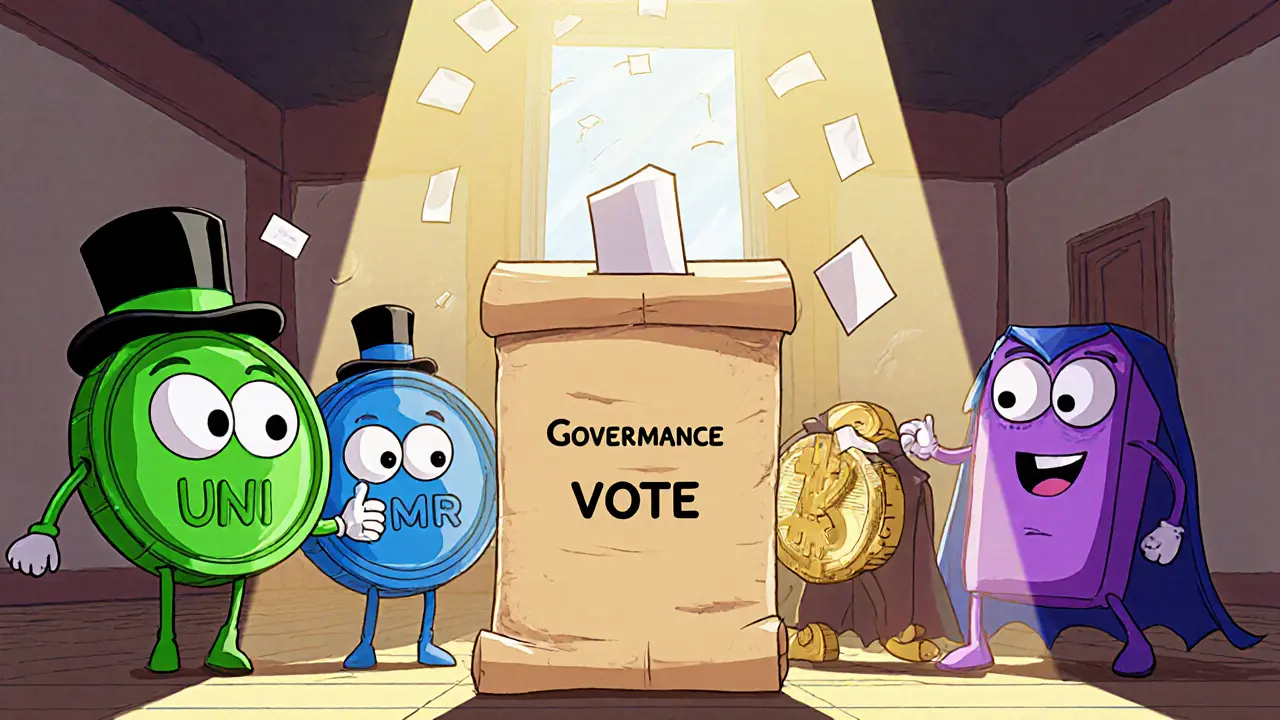Token‑Based Governance Explained
When working with Token‑Based Governance, a system where blockchain tokens grant holders voting power over protocol changes. Also known as token voting, it lets communities decide on upgrades, fee structures, and treasury allocations. This method has become the backbone of many modern crypto projects because it ties economic stake to decision rights. Below we break down the core ideas you’ll see across the posts on this page.
Key Concepts and Their Relationships
At its heart, token‑based governance encompasses on‑chain voting, where smart contracts record each ballot. It requires a Governance Token the specific crypto asset used to cast votes that represents both ownership and influence. The token’s design—supply, distribution, and utility—directly shapes how inclusive or centralized the process becomes.
A Decentralized Autonomous Organization (DAO) a community‑run entity that operates through code rules instead of a traditional hierarchy often employs token‑based governance as its decision engine. In a DAO, members submit proposals, vote with their governance tokens, and the outcome is executed automatically. This creates a feedback loop: the DAO’s success boosts token value, and the token’s value fuels more participation.
When you look at On‑Chain Voting the process of recording votes directly on a blockchain ledger, you see a clear link to security and transparency. Because each vote is immutable, participants can audit results in real time. Projects may choose different voting models—simple majority, quadratic, or time‑weighted—each affecting how power is distributed among token holders.
The economics behind the token—often called Token Economics the rules governing supply, distribution, incentives, and utility of a crypto token—are crucial. If a token offers staking rewards for voting, users are more likely to engage. Conversely, if voting requires large token balances, the system may skew toward whales. Understanding these trade‑offs helps you evaluate whether a project’s governance model aligns with your risk tolerance.
All the articles below dive into these ideas from different angles. Some explain how a specific token like MGO powers governance on its layer‑1 chain, while others compare voting speed versus security in fast‑finality blockchains. You’ll also find guides on implementing multi‑factor authentication for DAO accounts and deep dives into tokenomics of new DeFi platforms. Together they give a rounded view of how token‑based governance shapes the crypto landscape today.
Ready to explore the details? Below you’ll find curated posts that walk through practical examples, technical breakdowns, and strategic tips—everything you need to grasp token‑based governance and apply it to your own projects.

